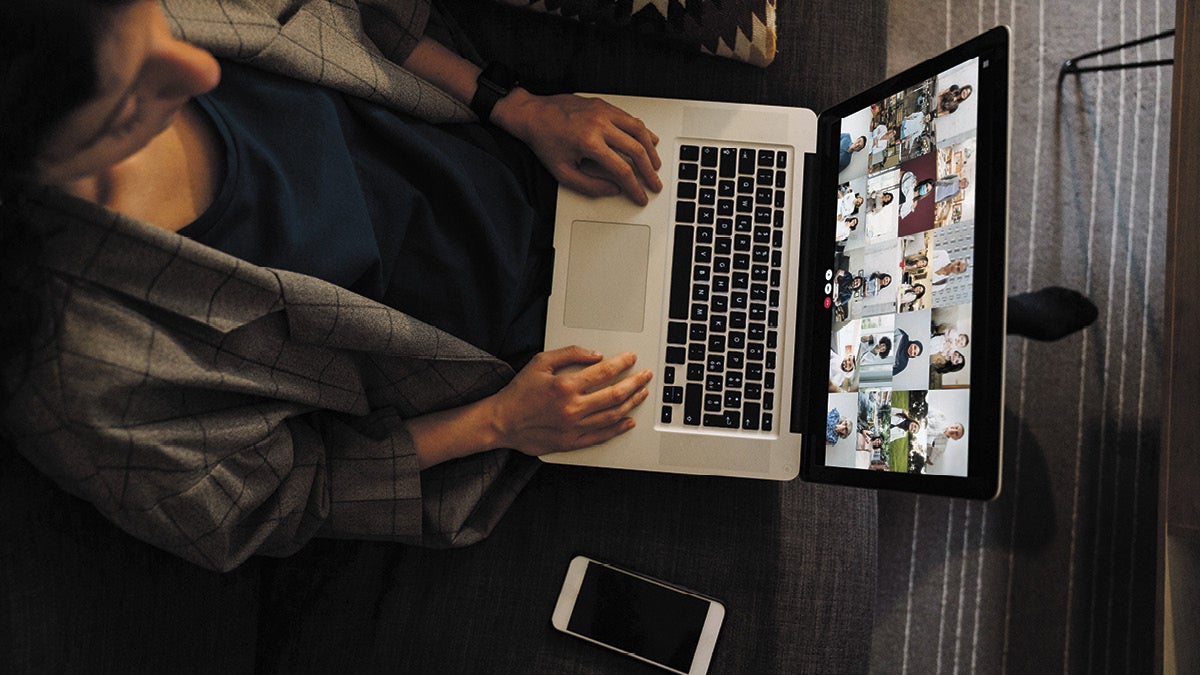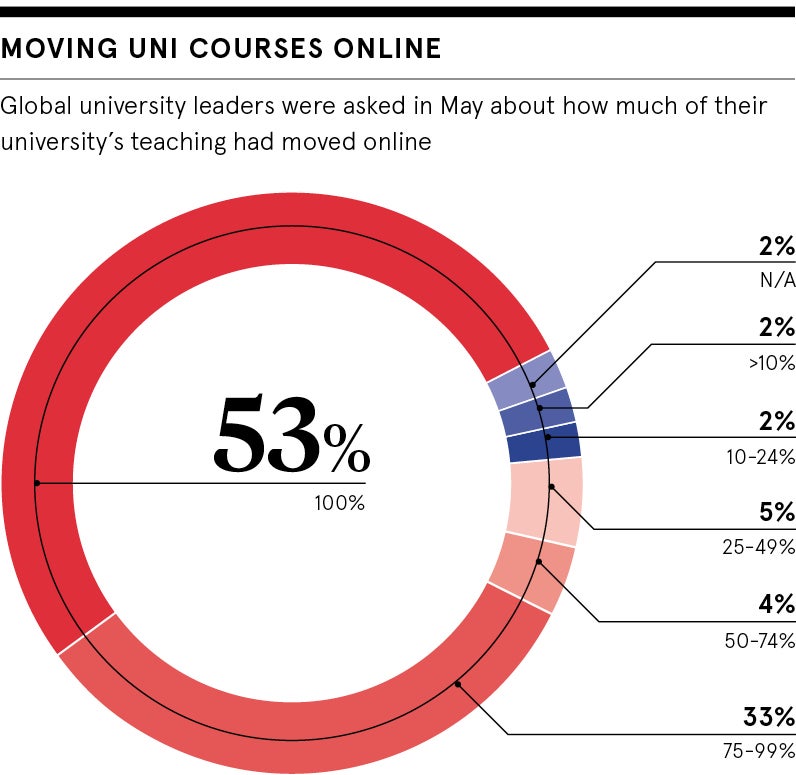
When the world changed this spring, so did universities. In a matter of days, campuses closed down, students settled in for a future of remote teaching and lecturers rapidly redrew their planned teaching to take place on digital learning platforms. It was a struggle and over the summer many staff have had the ability to collect their thoughts before heading into the 2020-21 academic year, which promises to be centred around online learning.
Many people will be remote teaching for the first time in the next month. The idea of adapting their teaching and learning to a world of interactive platforms is giving some pause for thought. While they may be better prepared than they were in March and April, they’re still picking it up for the first time.
Dr Mark Ritson, a lecturer with 25 years’ experience of physical teaching, who developed an online programme around four years ago, concurs: “What universities have is talented teachers with good experience of teaching, but it’s in the physical classroom.”
You can’t reproduce the physical classroom
For the last several months, while most students have been working on dissertations, I’ve been teaching a cohort of 80 Masters students from around the world, digitally. Online learning is different, but no worse than face-to-face teaching. In fact, in many instances, it’s better. But it requires different rules and a new skillset.
Students know what to expect from tuition at university. Bustling lecture theatres and small group seminars poring over texts and putting the world to rights are a common cultural trope passed down from one generation to the next. That makes it difficult to break out of stereotypes and try something new.
But in replacing face-to-face teaching with online learning, it’s possible to reinvent what teaching and learning looks like. “Everyone’s trying to recreate the classroom experience, which is not how this works,” says Ritson.
The programme I’ve taught on for the last three years has always been more practical than most. As journalism trainers, we threw out reading aloud PowerPoint slides and replaced them with interactive press conferences and cross-city treasure hunts through which students could learn their trade in as realistic a manner as possible.
Social distancing, local lockdowns and self-isolation, plus a global cohort, many of whom made their way back to their home countries, meant that wasn’t possible this year. But just because you’re teaching through a webcam, it doesn’t mean you can’t make teaching interactive, fun or live.

You can no longer “read the room” for feedback
The promise of digital learning means students and teachers can create interactive learning experiences, even with students in different parts of the world. Rather than sending them off to write the introduction to a news story, we instead brought them into a collaborative Microsoft Word document, where they could see how their peers were pulling together their stories.
Many feared that going online would result in a loss of real-time feedback, but I’ve learnt that’s far from the truth. Screen-sharing means providing real-time feedback is possible: you can see how a student fine-tuned their work, and to pick up and praise them for doing so after the fact. I created interactive quizzes that test students’ knowledge and gamify learning to check they understand what’s being taught.
That’s important because the ability to read the room is much harder. Students are reticent to turn on their webcams, particularly if they’re in a time zone that means it’s late at night or early in the morning. Timetables have also shifted to allow every student the chance to have a real-time session; we repeated seminars at 9am for students in China and 4pm for students in the United States, with many watching back recordings at a later date.
Learning to communicate in a new way
As anyone dealing with Zoom meetings knows, soliciting feedback or engaging in conversation is tricky online. We’ve been trained not to talk over each other and students use non-verbal cues to know when it’s safe for them to contribute. On a digital learning platform, this disappears.
One of the earliest challenges we had was soliciting feedback or asking questions and being met with 20 seconds of deafening silence. Internet lag, coupled with less-confident students typing responses into chat windows rather than unmuting their microphones to talk, means every interactive element we developed takes longer than it would face to face. In response, we cut the number of interactive discussions or practical exercises by a third from offline teaching.
One of the earliest challenges was soliciting feedback or asking questions and being met with 20 seconds of deafening silence
We discovered workarounds to keep things moving: asking questions that require one or two-word answers typed into the chat box rather than long dissertations, then encouraging students to expand on answers by unmuting their laptops and talking a little more about their thoughts.
Repeating any questions asked in full took some getting used to. Those watching a recorded version of the video often won’t have access to the accompanying text chat and so wouldn’t know what I was answering “Yes, absolutely, make sure you do that” to.
Students know this year is going to be like no other. While many are angry about A-level results, irked about fees and fearful about contracting the coronavirus during their on-campus teaching, they are also forgiving.
They know the challenges of getting a video chat to work better than most and they understand that one person running an online learning session isn’t going to be as slick as a traditional television programme. By being honest and upfront about what my teaching would do, and what it wouldn’t, I found students were appreciative of my efforts.
Chris Stokel-Walker is a lecturer in journalism on the undergraduate and postgraduate courses at Newcastle University’s School of Media, Culture and Heritage.

When the world changed this spring, so did universities. In a matter of days, campuses closed down, students settled in for a future of remote teaching and lecturers rapidly redrew their planned teaching to take place on digital learning platforms. It was a struggle and over the summer many staff have had the ability to collect their thoughts before heading into the 2020-21 academic year, which promises to be centred around online learning.
Many people will be remote teaching for the first time in the next month. The idea of adapting their teaching and learning to a world of interactive platforms is giving some pause for thought. While they may be better prepared than they were in March and April, they’re still picking it up for the first time.
